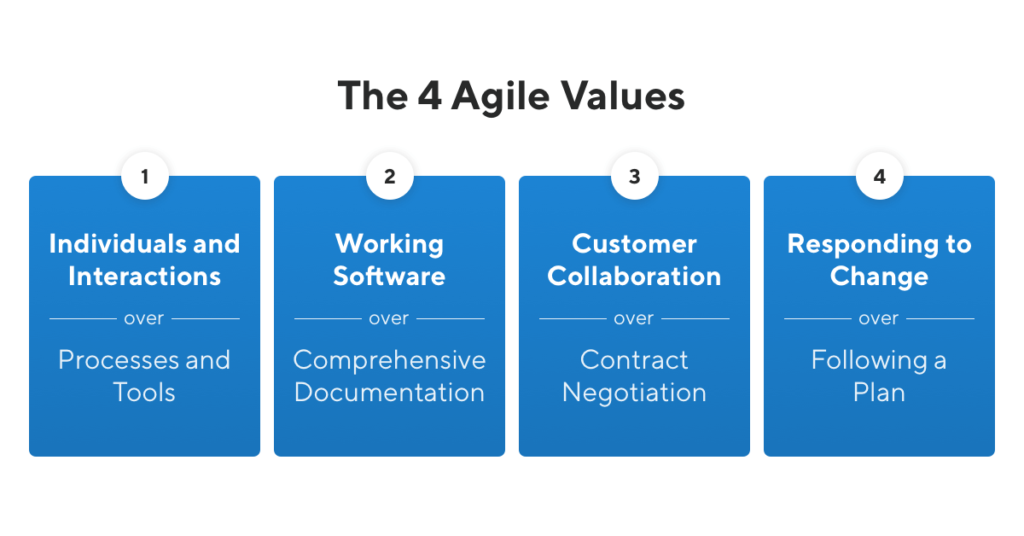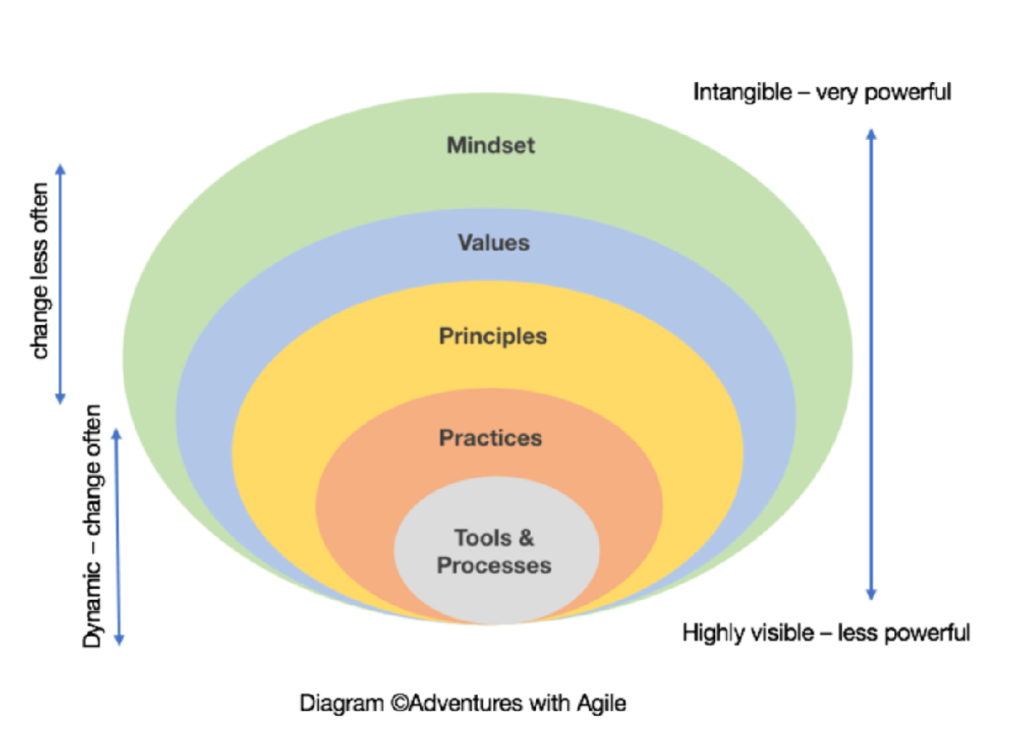The term “agile working” is no longer brand new, but the hype around it is still going strong. Interestingly, the topic doesn’t seem to be polarizing at all. Because, let’s be honest, who doesn’t want to be agile? Hardly any confident CEO would step before his or her team to proudly announce that the company still believes in rigidity and inflexibility. But what exactly is agile, what does Scrum mean, and what the heck is the agile mindset all about?
The origin of agile
It all goes back to a beautiful spring day in the year 2000 at the Rogue River Lodge, somewhere in Oregon, USA. Back then, a group of about 20 software developers, who are known as the “Agile Community” today, had gathered there. They were all united by a certain dissatisfaction with the way they had to do their work. In a world increasingly characterized by change (the term VUCA is often used in this context), it was common practice to work with extremely long-term and detailed project plans. As a result, developers began to feel frustrated as projects were delayed indefinitely, sometimes even resulting in products that no longer seemed to meet current customer needs. To avoid this in the future, the group formulated a set of beliefs which we know today as the “Agile Manifesto.”
The base: the Agile Manifesto
The answer to their challenges is an agile approach which makes it possible to respond to change and to adapt an organization’s methods again and again in short iteration cycles. In this context, the agile manifesto postulates four central values which can be applied not only to software products, but also to a wide variety of companies and organization types.

The agile mindset: a way to agile working
If you think that agile working methods are mainly about the correct adherence to a rigid process, you are mistaken. Rather, the so-called “agile mindset” is the most important element on the way to an agile organization. The desire for collaboration, breaking down silos, total transparency and honest feedback are the cornerstones that make agile working possible in the first place. The illustration below underlines that the agile mindset stands above everything, but the values and principles as well as the practices and processes are also central parts of the agile system.

Agile leadership: where does it make sense?
Agility is a topic that must not only be lived in the individual agile teams, but must be firmly established throughout the entire organization, especially at the highest management level. In one of its current issues, Harvard Business Manager describes how vital agility is in the executive suites of companies in order to free up time for actual management tasks like strategy and innovation. The wording defines leadership responsibility as “top managers creating a carefully balanced system that is both stable and agile.”
As a basic rule of thumb for the leadership of an organization, agility always makes sense if the goal is to foster innovation and support new approaches. However, if the goal is to avoid errors, then classic, hierarchical systems are still justified (this is often the case in manufacturing companies or in areas with a high degree of standardization and documentation requirements, such as the pharmaceutical industry).
SCRUM: how agile project management works
SCRUM is not the only agile project management method, but it is by far the best-known (other methods include KANBAN, Lean Start-Up, or hybrid forms such as SCRUMBAN). The name is derived from Scrum, as practiced by rugby teams, and symbolizes the coordinated, close cooperation of a team. In essence, Scrum is about a team building a product piece by piece in short iteration cycles, with maximum flexibility and adaptability being the top priorities in development. This enables the team to respond to change requests in the shortest possible time and thus to always maximize the benefit for the customer without having to accept a long time-to-market. Team members of a Scrum team typically include the product owner, scrum master and development team.

How we at Leaders21 live agility
At Leaders21, we always aim to put the benefit for our customers and users at the center of our daily actions. Above all, an open mindset and a strong feedback culture are part of our DNA. We almost automatically live the agile approach, yet without strictly adhering to standardized processes (in software development we are closer to the process and live SCRUM in its purest form). In general, we share our ideas with our colleagues at a very early stage and actively solicit feedback in order to respond to changing conditions as best and as quickly as possible to optimize our products and services. As scrum masters and agile coaches, we are always happy to help our customers make their companies more agile! If you want to learn more about “agile working” just write me your questions!
Fritz Krassnitzer
Email: fritz.krassnitzer@leaders21.com
Link to profilepage

